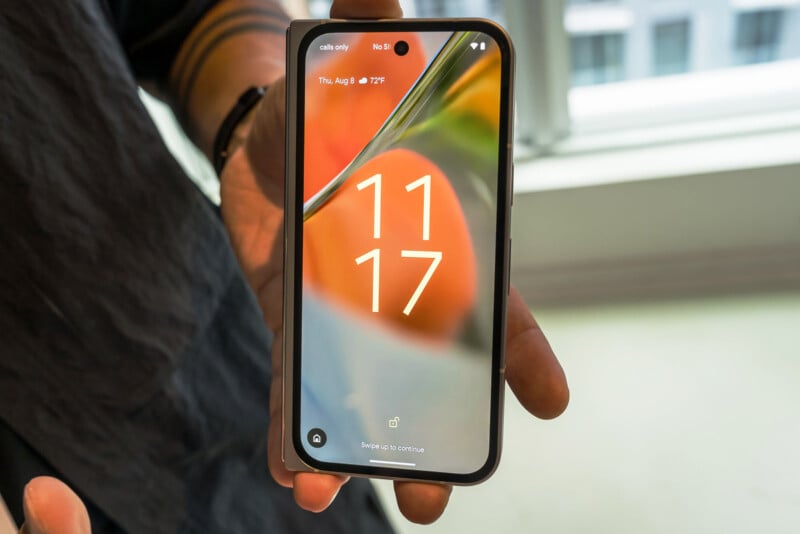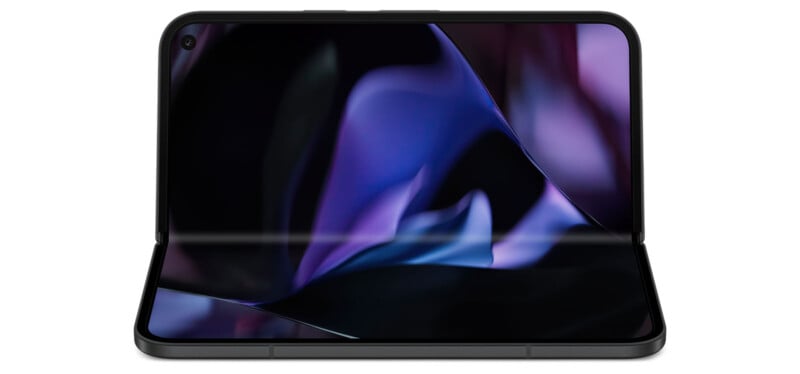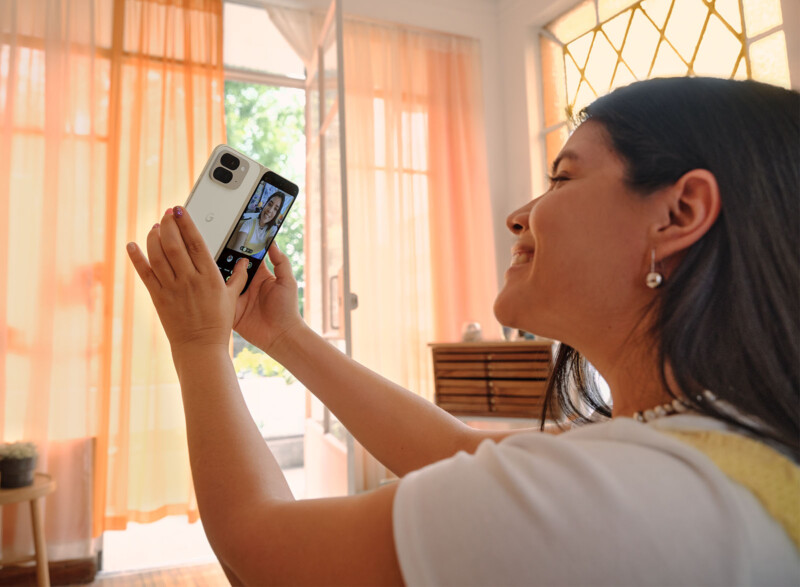Google Pixel 9 Pro Fold Hands-on: A New Face With the Same Soul
![]()
Google is giving it another go with a foldable phone but also choosing to extend its flagship lineup at the same time. The Pixel 9 series comprises four models, with the Pixel 9 Pro Fold being the most unique of the new quartet. The regular Pixel 9, on the other hand, is the modest entry-level choice.
This launch is particularly poignant because it expands Google’s new foldable to more markets. The previous model was only launched in the U.S., U.K., Germany, and Japan. The Pixel 9 Pro Fold will expand to 15 other countries (Canada, Austria, Belgium, Denmark, Finland, France, Ireland, Netherlands, Norway, Switzerland, Sweden, Australia, India, Singapore, and Taiwan), making it a significant release for Google’s nascent foldable lineup.
Making Changes
The original Pixel Fold proved itself a multitasking maven and surprising battery stalwart. Still, it was pricey and inferior in camera quality to the Pixel 7 Pro or Pixel 8 Pro. Google made several aesthetic and functional changes to set the 9 Pro Fold apart from its predecessor.
For starters, the external screen (when folded) now bumps up to 6.3 inches. It’s an OLED panel with a 2,024 x 1,080 resolution, a 60-120Hz refresh rate, and 2,700 nits of peak brightness. Unfold it, and you get an eight-inch Super Actua Flex OLED display with 2,152 x 2,076 resolution and a 1-120Hz adaptive refresh rate. The stainless steel hinge is strong, giving the device a satisfying fold and clamp to it that also lines up nicely with nary a gap between the two sides. It’s conceptually similar to the Samsung Galaxy Z Fold 6, but also some of the foldables I’ve seen from the likes of Vivo and Honor as well.

At 10.5 millimeters when folded, Google manages to shave off about 1.6 millimeters — perhaps helped by the fact the Pixel 9 Pro Fold is wider and a tad longer, too. It’s also 36 grams lighter, which is noticeable when holding the device with one or two hands. You lose a bit on the battery at 4,650mAh capacity, though Google claims greater than 24-hour battery life despite that. It’s unclear what the optimizations are within Android to help keep the lights on longer, though.

Folding Out the Cameras
The Pixel 9 Pro Fold tells an interesting story on the camera side — at least on paper. I didn’t get a chance to get a feel for what the rear cameras could do, given the limited space and opportunity at Google’s launch event in Toronto, but I tried to get a sense of what to expect.
Google says the 48-megapixel main wide camera (25mm equivalent) is different from its predecessor, but when pressed on whether that meant a newer sensor or focusing system, I couldn’t get a clear answer. It is clear from the specs that it’s a Type 1/2.0-inch sensor with an f/1.7 aperture. It sports phase detection and laser autofocus, plus optical image stabilization. Not to mention, all images are pixel binned to 12-megapixels. Spec-for-spec, these numbers match the previous Pixel Fold’s primary shooter, so it’s unclear where the hardware changes may lie.
![]()
The telephoto looks like a similar state of affairs, with the same 10.8-megapixel shooter offering 5x optical zoom (112mm equivalent) and f/3.1 aperture. Google plays up its Super Res Zoom as an equalizer to get even closer to a subject, but it’s hard to tell if the software optimizations will lead to much better results this time around despite the familiar hardware. The ultra-wide appears to be an outlier with a different 10.5-megapixel Type 1/3.4-inch image sensor with an f/2.2 aperture, autofocus, and broader 127-degree field of view. It also doubles as the phone’s macro camera.
The thing about foldables is their very form factor creates unique opportunities to capture photos or video from unique angles and perspectives. Google barely touched on any of that in talking about the Pixel 9 Fold Pro, focusing instead on selfies and the deep editing suite associated with Google Photos. It’s hard for me to discern exactly what to expect until we can take a Fold Pro out into the wild and snap away.
One thing that popped out at me was the inability to shoot in RAW at full resolution. Google reps I spoke with weren’t sure if that’s how it will be when the device launches to consumers, given the software was still in pre-production settings. We’ll see if they throw that feature in, but my instincts tell me you’ll only be able to capture RAW in pixel-binned 12-megapixels. I couldn’t find any way to even capture full-resolution images in JPEG, either.
![]()
AI Editing Takes Over
Google hyped its editing chops far more than what the cameras themselves can capture. One exception, however, is a newer feature called Add Me. It’s not exclusive to the Fold Pro, as all Pixel 9 devices can do it, but it’s an interesting take on photo inclusion. Basically, you can take a photo of a group and then switch places by handing the phone to someone in the group, who will then take a photo of you in the group. The phone will merge the two images to include everyone.
One caveat I noticed is that it matters where the initial photographer enters the frame. The best results probably come out when the initial photographer situates themselves in what would’ve been an empty space in the frame. It’s still worthy of experimentation, but I’m not sure how effective it will be in settings where people or objects move in the background.
The Fold Pro is undoubtedly adept as an editing canvas simply because you can run two apps side-by-side. That’s true of any foldable, mind you, and unlike Samsung’s Fold lineup, you’re limited to two apps at once, not three. You can adjust the dimensions of either app and as someone who’s used Lightroom and the camera or Google Photos simultaneously, I can attest to the productivity such a setup enables.
![]()
Google cites the example of Magic Editor as appearing even more dynamic on the device when you fold it out. You can let it reframe your photo by suggesting how it thinks you should crop it. It can also do the opposite, letting you expand the scene with generative AI filling in the margins. A newer Reimagine mode enables you to type in what you want to add or adjust in the photos. That could be a bluer sky or mountain range in the distance, among whatever else the AI can pull off. I played around with it and found both strange and impressive results.
Now that Google’s Gemini will play a far more prominent on-device role, AI will form part of the user experience on the Pixel 9 Fold Pro. You can choose to opt-out, as far as I can tell, so nothing is forcing you to edit photos using the AI tools. Google’s already moved to make changes to its Photos app to pave the way for Gemini, so the stage is being set.

Coming Soon
Google’s new Tensor G4 chipset won’t win any awards for pure speed and raw power, but it’s hard to argue with the efficiency the CPU brings to Pixel devices — at least most of the time, when there aren’t initial kinks to work out. The Pixel 9 lineup now has four options, with the Pixel 9 Fold Pro starting at $1,799 and coming in obsidian black and porcelain white colorways.
Image credits: Photos by Ted Kritsonis unless otherwise noted.